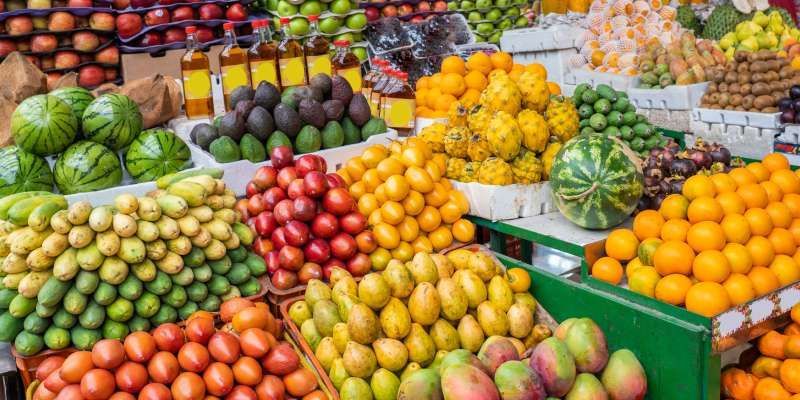Colombian fruits: protagonists because of their quality

When it comes to treasures, Colombian fruits are a very important and delicious one. From the peaks of its mountains to the tropical valleys, Colombian territory is characterized by its diversity and the ability to bring a wide variety of foods to life.
Undoubtedly, its range of fruits is extensive and increasingly captivating for both locals and foreigners. In this article, we will explore the reason why these fruits are of high quality; as well as their opportunities and uses in the industry.
Colombian fruits, a true wealth
Colombia is a country known for its unparalleled biodiversity. Not only tropical fruits, sweet, or acidic fruits are produced here, also are the exotic ones, such as soursop fruit. The latter have made the country world-renowned.
And it is because of their unmistakable aroma and color, people feel invited to discover them and delight with their flavor. Moreover, the country boasts around 433 native species, and each region cultivates several fruits that are unique to the territory. As a fun fact, Colombians consume 9.7 million tons of fruits per year (Treid, 2023).
Most popular Colombian fruits in the market
According to data from 2022, the fruits that are most consumed in Colombia are (Treid, 2023):
· Lemon.
· Mango.
· Guava.
· Tree tomato.
· Blackberry.
· Pineapple.
· Passion fruit.
· Orange.
· Coconut.
· Avocado.
· Papaya.
· Apple.
· Lulo.
· Mandarin.
Similarly, last year, USD 1,468,299,383 worth of Colombian fruits were exported. Among them were 79 varieties that reached 66 countries worldwide. In that regard, the top 10 were (Treid, 2023):
1. Cavendish banana.
2. Hass avocado.
3. Ripe plantain.
4. Key lime.
5. Gulupa.
6. Cape gooseberry.
7. Mango.
8. Apple banana, or bocadillo.
9. Orange
10. Granadilla.
Quality, a key characteristic
Colombia is characterized as a territory of fertile land. In addition, it can be said that it has been blessed by its strategic location. Thanks to this, the equator line provides year-round luminosity (infobae, 2023).
This makes it possible for there to be enough production for the country and foreign markets. Likewise, its variety of climates and thermal floors help to cultivate various crops (Colombia Co, s.f.). In fact, it is thanks to this diversity that ‘salpicón’ exists.
Opportunities and uses in the market
As we have seen, the fruit market is continuously growing. This is because foreign countries are increasingly seeking Colombian flavors. That is why fruit puree or pulps have become significant inputs within the food industry.
Furthermore, as a result of the pandemic, there began to be a rise in demand for fruits rich in vitamin C, as these help strengthen the immune system. Additionally, there was a shortage of them and an increase in the price of citrus fruits.
This means that there is a great opportunity for exotic fruits such as Cape gooseberry and gulupa (Cárdenas, 2020).
Thanks to the versatility of Colombian fruits, they can be used to make juices, smoothies, jams, or purees. One of the most popular and delicious is mango puree.
You can also prepare desserts, ice cream, cakes, yogurt, salads, sauces, cocktails, and even beers. It all depends on creativity.
Make the most of the unparalleled flavor and versatility of Colombian fruits! Encourage yourself to use them and raise, alongside them, the banner of quality.
Referencias bibliográficas
- Cárdenas, A. (2020). Retos y oportunidades de las frutas colombianas en el exterior. RCN Radio.
- Colombia Co. (s.f.). El tarot de las frutas exóticas de Colombia.
- Infobae. (2023). Tres características por las cuales los colombianos somos únicos en el mundo.
- Treid. (2023). ¿Cuáles fueron las 10 frutas que más exportó Colombia en 2022?














